Seaweed farming, a primary source of income for many women in Tamil Nadu’s Ramanathapuram District, is threatened due to increasing environmental and social challenges. Reduced number of working days due to increasing cyclones, shrinking space to farm seaweed, decreasing quality of seaweed due to global warming and gender-based discrimination in the society, push the women farmers to pursue alternate sources of income. Meanwhile, India aims to increase seaweed output to at least one million tonnes annually by 2025 and has started the construction of the country’s first multipurpose seaweed park in Tamil Nadu. Almaas Masood reports
“My mother used to collect seaweed from the sea. As a child, I naturally followed her to sea and ever since then, seaweed farming is what I do,” says R. Suganthi, 45, who trains a self-help group on seaweed culture. She makes a living off of the sea, on Rameswaram Island (also known as Pamban), located in the Ramanathapuram District of Tamil Nadu.
Seaweed, a naturally abundant resource, is available and accessible to the women on Rameswaram’s coast. While the men venture deep into the sea, the women collect seaweed closer to shorelines, a primary source of income for themselves. Many of these women who are now in their fifties, began farming seaweed when they were teenagers. They dive underwater to harvest the seaweed and sell them in two forms – dried seaweed which fetches them Rs 110-115 per kilogram, and fresh seaweed which sells for a lesser price at Rs 60 per kilogram.
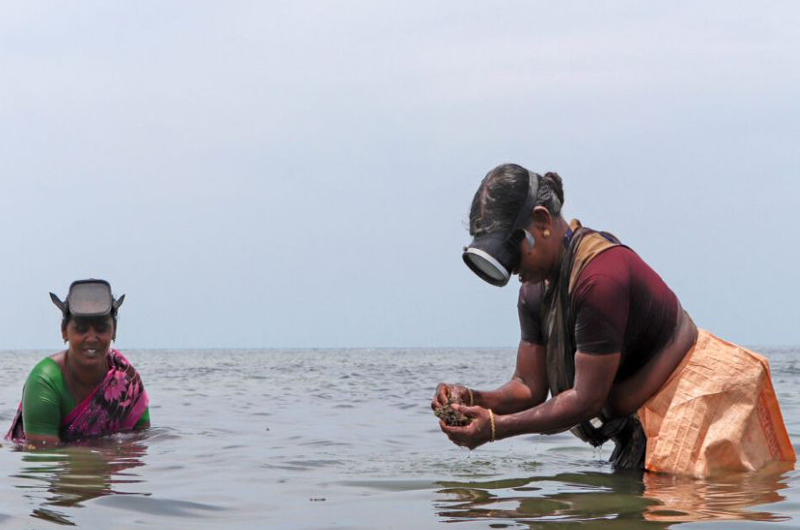
“Our day starts early; we walk three kilometres towards the sea till Olaikuda on Palk Bay. We dive and look for naturally available seaweed. We collect anywhere between three to five kilograms of kanji pasi (Gracilaria edulis), marikolunthu pasi (Gelidiella, a genus of red algae) each day,” says Usha Muniswamy, another seaweed farmer. Palk Bay is a shallow water body between the southeast coast of India and Sri Lanka. Like hundreds of sari-clad women before them, with a simple plastic sack tied around their waist and basic diving masks, women from the coastal villages in Ramanathapuram still rely on the risky business of seaweed farming for their income.
But what makes seaweed farming a risky profession? Dhanalakshmi S., a seaweed collector from Mangadu explains, “The water sometimes gets stuck in our diving masks while we are underwater. We also have to walk on sharp underwater rocks. Any slip can be lethal. We do not even have a clinic in our village. The closest hospital is eight kilometres across Pamban Bridge from our house.” The divers also have to prove their identity to the Indian Coast Guard when questioned. They add that they are also scared of the Sri Lankan Navy, due to the long-prevailing tensions regarding maritime borders, between the two countries. “The (International Maritime) boundary with Sri Lanka is an hour away on our boats. Earlier, only the fishermen used to get identity cards. After much protests since 2012, some of the fisherwomen, including seaweed workers, finally received biometric cards last year. We can now prove our identities to the security agencies,” says Lakshmi Murthy, a former seaweed collector, who now runs a self-help group on the island.
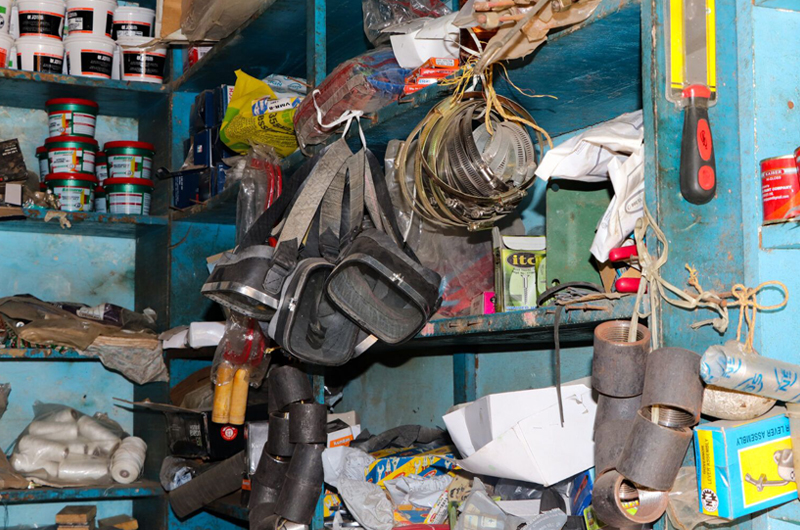
The seaweed harvested this way is exported and extracted for its additives, rather than as a sea vegetable to be consumed whole. Currently, seaweed is used in making human food, cosmetics, fertilisers, and to extract gums and chemicals with both industrial and medical use. Ironically, the women who collect the seaweed from the ocean, do not consume any of these products made from seaweed. By 2025, India hopes to expand seaweed output to at least one million tons annually. The investment is a part of the Blue Revolution scheme under the Pradhan Mantri Matsya Sampadhana Yojayana. However, more and more women in Ramanathapuram District are discouraging their daughters from taking up seaweed farming after them, as the profession becomes increasingly difficult with different environmental and social pressures.
Reduced sea days
Seaweed farming at Rameswaram is practised according to the lunar cycle. The women work for six days starting from a full moon day, followed by a nine-day break. The work then resumes for six days more when it’s a new moon, followed by a nine-day break again, and so on. Murthy explains that the number of days they collect seaweed in a 30-day cycle has also been reduced by six days now. “Earlier we would take a six-day break, instead of nine.” The three extra days are now given so the seaweed can grow back healthier.
The number of annual working days at sea have also been impacted due increased cyclones on the east coast. Weather experts state that more cyclones impacted the Tamil Nadu coast between 2002 and 2021 than between 1982 and 2001. Cyclones are making landfall in Tamil Nadu more frequently, which also impacts the seaweed farmers. In addition to this, an annual fishing ban of two months, a lean period during the southern monsoons, and increased irregularities in the weather leave the women with only seven months of reliable working conditions at sea per year.
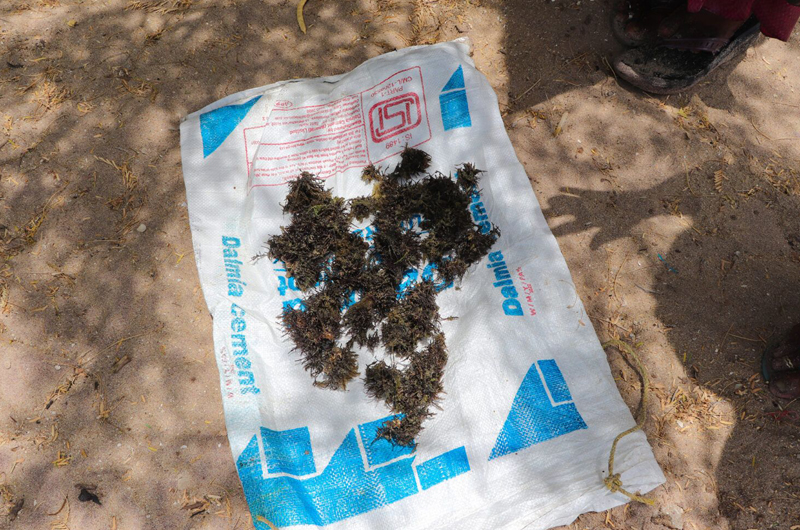
A shrinking space
Aside from fewer working days, the areas where women traditionally picked naturally available seaweed have shrunk as well. Previously, the seaweed farmers could venture out on both the northern (Palk Bay) and southern (Gulf of Mannar) sides of Pamban Island. They could make it all the way to the last of the Gulf of Mannar’s 21 islands. They are now limited to collecting seaweed on the northern side (Palk Bay) of the narrow strip of land they call home. “We used to make week-long trips to Kurusadatheevu (Krusudai Island) in the south to gather seaweed. Now the Forest Department allows access to as far as nine islands, that too for a day’s trip,” shares Murthy.
Many local divers and fishers have long used Krusadai and other adjacent islands as traditional fishing sites in the Gulf of Mannar. This region has now been converted into an eco-tourism spot. From the perspective of marine biodiversity, this region is one of the richest in the world. It was announced as a Marine National Park in 1986 and subsequently declared as a biosphere reserve in 1989. This led to the area becoming off-limits for local communities. Gulf of Mannar is a repository of marine diversity, home to threatened species such as dugongs and coral reefs and is of significant global importance. “The forest officials told us that harvesting pasi from the south side is damaging the sensitive ecosystem. We had no other choice but to look for alternative livelihood resources,” explains Murthy.
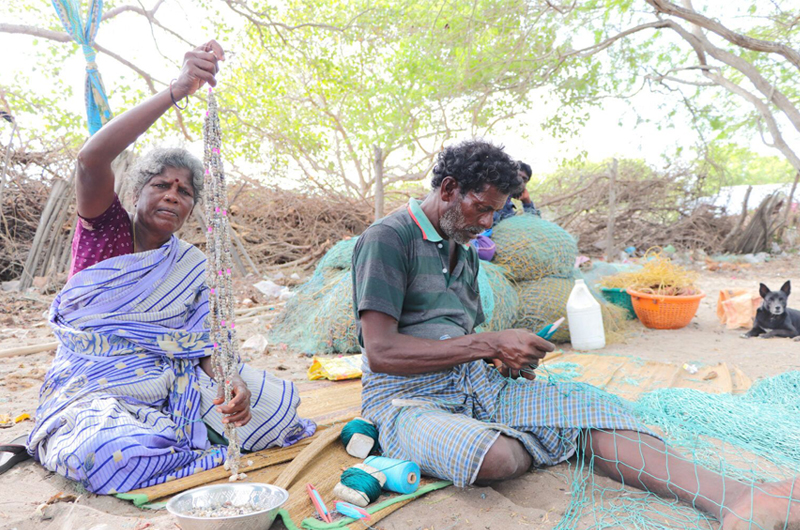
Climate impacts on the quality of seaweed
Seaweed plays an important role in the marine ecosystem. It is known as climate-smart algae, because it absorbs significant amounts of carbon and reduces ocean acidification. Several studies have highlighted the role of seaweed in climate mitigation. However, global warming is reducing the quality of seaweed in the ocean.
Swapnil Tandel, a senior scientist who was previously with Central Marine Fisheries Research Institute (CMFRI), in conversation with Mongabay India, explains, “Industries focus on a species of seaweed called Kappaphycus (pepsi pasi) in India, for its chemical compound called carrageenan. Carrageenan is used in a variety of foods, cosmetics, pharmaceutical products and dietary supplements. It is a gel-like substance used as a thickening agent.” According to Tandel, this species of seaweed is not acclimatising to changing environmental conditions. It is susceptible to a disease called ‘ice-ice’ which completely robs the seaweed of its colour. “It impacts the very component (carrageenan) the seaweed is being harvested extensively for,” he adds.
Studies find that when seaweeds are stressed by variations in ocean temperature, salinity and light intensity, they produce a “moist organic substance” that attracts bacteria in the water and results in the distinctive “whitening” and hardening of the seaweed tissues. This is how ‘ice-ice’ occurs. Reduced carrageenan quality and declining culture stocks brought on by the ice-ice disease, have therefore resulted in lower market prices and lost incomes, particularly for small-scale seaweed producers. In the long-term, climate change itself may make it more difficult to expand seaweed farming, despite the fact that it benefits the environment.
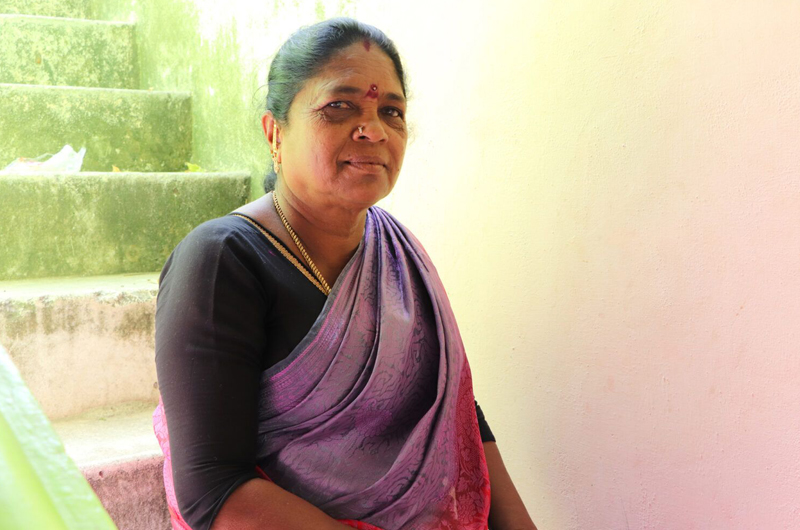
Challenges on the land
Having braved many challenges at sea, discrimination based on gender, age and marital status, makes the women divers vulnerable to exploitation on the land. Multiple women with whom this correspondent interacted said that they neither know the market rates for seaweed nor do they know who the seaweed is sold to. Their diving gear is also brought to them by their husbands or a male member of their household from shops near the harbour. They did not know the cost of the mask either. Each mask is sold for Rs 180-Rs 200 at the shops in Rameswaram Harbour, this correspondent found during the field visit.
“Women working at coasts play crucial roles in the fishing industry’s supply chain and often contribute significantly to their local economies. However, women working in the fishing industry may encounter difficulties in accessing markets and obtaining fair prices for their catch. Middlemen or traders may take advantage of their vulnerable position, reducing their earnings,” Professor Anjal Prakash, clinical associate professor and research director, Bharti Institute of Public Policy, Indian School of Business (ISB), tells Mongabay-India.
On the island, even marketplace access is limited to the women. The access also depends on one’s age and marital status. “In many coastal regions, there are existing gender disparities that affect women’s participation in the workforce. They may have limited decision-making power, face discrimination and have less access to education and training opportunities compared to their male counterparts,” explains Prakash.
“We don’t encourage unmarried younger girls to have a life like this now. We want them to go to school. A young widow is not allowed to go to the marketplace in public, nor is she encouraged to collect seaweed,” says Murthy. The younger widows, who previously pursued seaweed farming, are now seeking daily wage opportunities through the Mahatma Gandhi National Rural Employment Guarantee Act (MGNREGA). Even for the biometric card to prove their identity, only the older women are encouraged to apply.
So far, the Fisheries Department has distributed 162,262 biometric cards to marine fisherwomen across India. However, a report made for the International Collective in Support of Fishworkers (ICSF) states, “This is useful only to avail the facilities offered by the Fisheries Department and does not make them part of the formal workforce or help them avail access to workers’ rights as mandated by the Labour Department which ensures safe and secure workspace and access to legal provisions like Labour Court.” The same report also highlights that, while there are schemes such as accident relief and death relief for men at work, the same is not available for women. “These point to the poor design of policies and its weak implementation without understanding the gendered functioning of society, and the crucial concern of non-recognition of women as fishworkers,” it states.
New avenues of income
Amidst all the odds, to stay afloat, the seaweed collectors have found new avenues of income. During the non-seaweed cultivation periods, the women rely on selling seashell crafts and working as daily wage labourers at local aquaculture factories or taken on work under the 100 days of employment that the MGNREGS provides. “As a woman making seashell crafts, and selling seaweed, I’m able to run my family as well as educate my children. The younger generation knows the traditional craft of the seaweed business. However, they are unwilling to continue with the profession,” shares Suganthi who, along with many other women, was trained to make sea shell crafts from the National Institute of Fashion Technology.
A dozen strands of seashells sell for Rs. 120. “We have the knowledge of the sea trade, as well as business on land. However, we are uneducated. We see that any passing of a scheme for us requires a signature of the officials. We want to educate our children to be in such positions. If my daughters become a part of the fisheries department instead of going to the sea, then many families like mine will benefit from it. Since she already knows our troubles, she could make better policies and schemes suited for us,” adds Suganthi with hope.
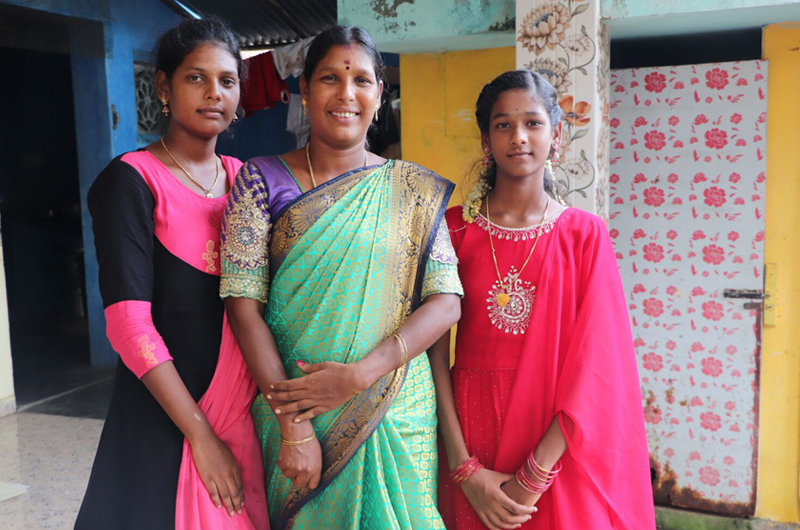
Government’s ambition
Meanwhile, the Department of fisheries, Government of India, and the state government of Tamil Nadu are on a mission to tap the seaweed potential of the state. The construction of a new Integrated Seaweed Park at Thondi in Ramanathapuram District began on September 2 (last year), with an investment of Rs 127.7 crores (Rs 1.27 billion). The main components of the seaweed park include identification of potential seaweed resources in coastal fishing villages, establishing tissue culture labs and R&D facilities, shore-based infrastructure facilities (drying yard, warehouse, etc), skill development and capacity building, storage and marketing facility, processing and value addition facility and monitoring and surveillance.
The seaweed park will also provide single window support for the entrepreneurs and processors to access information on schemes, licenses/approvals required, while also providing space to set up processing centres. An immediate focus of the project is to “increase (seaweed) production by increasing the number of farmers.”
(Courtesy: Mongabay-India/ india.mongabay.com)


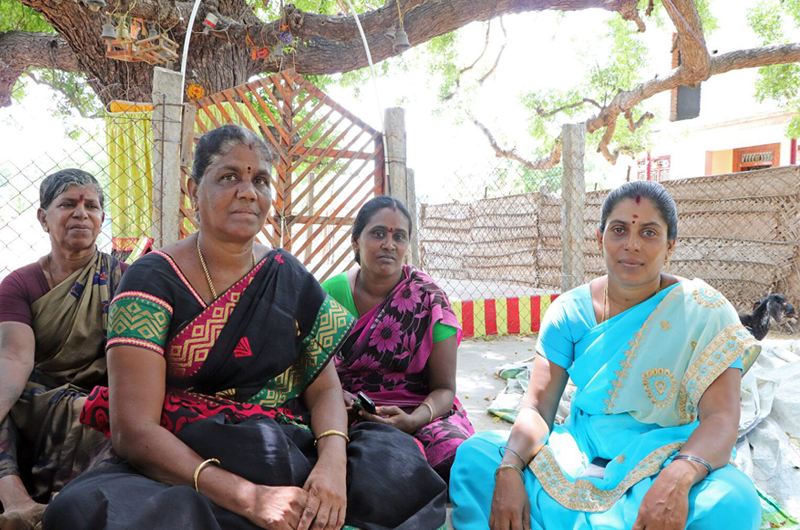
 from Webdoux
from Webdoux